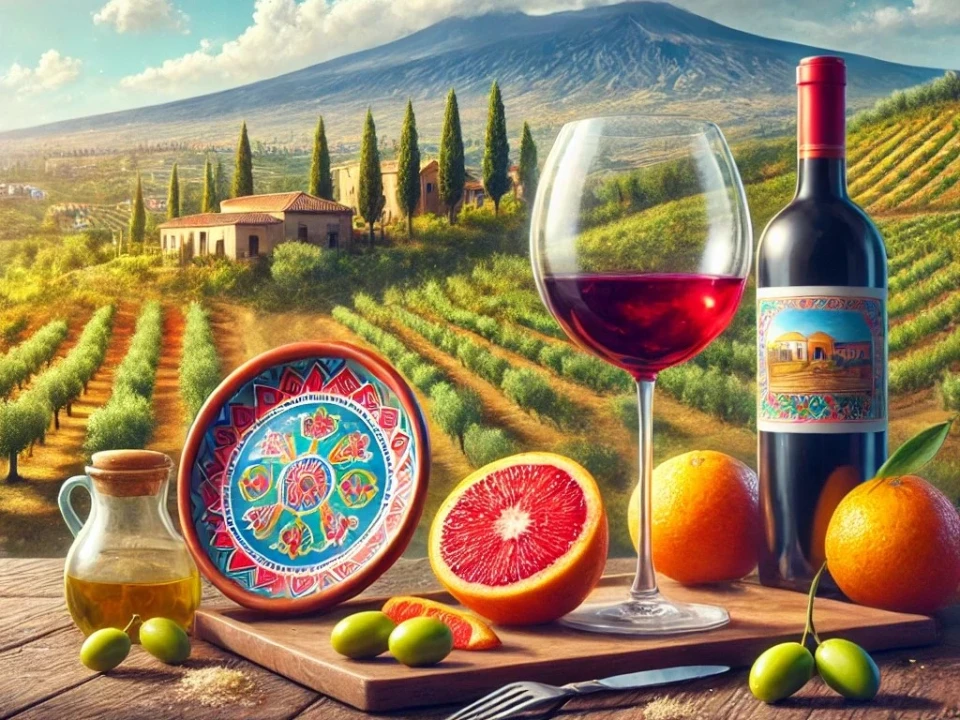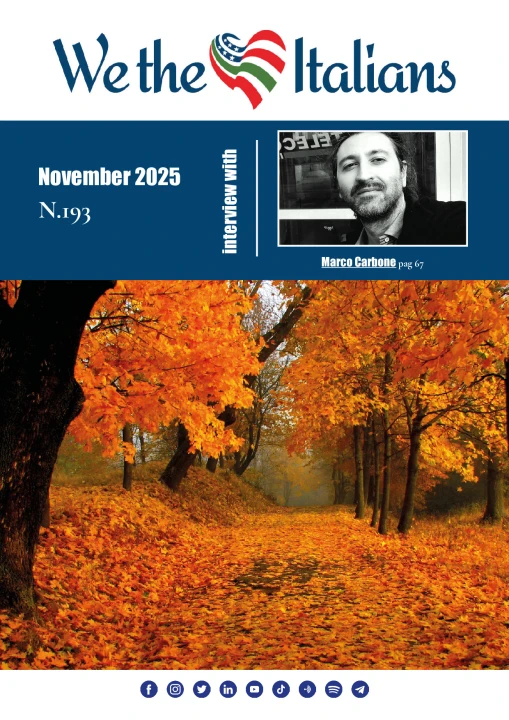Sicily, the largest island in the Mediterranean, boasts a rich history, culture, and climate that make it one of the most important wine-producing regions in Italy. The island has been making wine for over 3,000 years, with influences from the ancient Greeks, Romans, Arabs, and Normans.
Today, Sicily’s wine scene is flourishing, combining traditional methods with modern innovations. The island’s diverse landscapes, from the coastal areas to the volcanic slopes of Mount Etna, offer a variety of terroirs that produce wines with distinctive character.
Here’s a look at some of the best wines from Sicily, ranging from reds to whites and even dessert wines.
Nero d'Avola
Nero d'Avola is arguably Sicily’s most famous and widely planted grape variety. This red wine is named after the town of Avola in the southeastern part of the island, although it is grown in many regions of Sicily. Known for its deep color, robust structure, and rich flavor, Nero d'Avola has become a symbol of Sicilian winemaking.
The wine typically has intense aromas of dark fruits like black cherry, plum, and blackberry, accompanied by hints of spices and chocolate. It is full-bodied with smooth tannins, and the finish can be long and satisfying. Nero d'Avola is a versatile wine that pairs well with grilled meats, pasta with rich tomato sauces, and aged cheeses. Some producers, like Planeta and Cusumano, craft exceptional versions of this wine, balancing power and elegance.
Cerasuolo di Vittoria
Cerasuolo di Vittoria is Sicily’s only DOCG (Denominazione di Origine Controllata e Garantita) red wine, which is the highest designation for quality wines in Italy. This wine is primarily made from two grape varieties: Nero d'Avola and Frappato, a local Sicilian red grape known for its aromatic and lighter character. The blend creates a wine with a unique balance of strength and finesse.
Cerasuolo di Vittoria has a deep ruby color and a complex bouquet of red fruit, spices, and floral notes. It’s medium to full-bodied, with smooth tannins and a fresh acidity that makes it very versatile. This wine pairs beautifully with Sicilian dishes like pasta alla Norma (pasta with eggplant and ricotta salata) and roasted meats. The best producers of Cerasuolo di Vittoria include Planeta, Feudo Montoni, and Azienda Agricola Gulfi.
Etna Rosso
Mount Etna, one of the most active volcanoes in the world, has become one of the most exciting regions for wine production in Sicily. The volcanic soil, high altitude, and unique microclimates create conditions that are perfect for growing high-quality grapes, particularly for red wines like Etna Rosso. Made primarily from the indigenous Nerello Mascalese grape, sometimes blended with Nerello Cappuccio, Etna Rosso is a wine that reflects the distinct terroir of the mountain.
Etna Rosso is typically medium-bodied, with aromas of red berries, herbs, and earthy notes. On the palate, it has vibrant acidity, fine tannins, and a mineral quality that speaks to the volcanic soils. The wine is aging potential is remarkable, and with age, it can develop complex flavors of dried fruit, leather, and tobacco. This wine pairs excellently with Sicilian cuisine, including grilled meats, game, and rich pasta dishes. Some of the top producers of Etna Rosso include Tenuta delle Terre Nere, Passopisciaro, and Frank Cornelissen.
Grillo
Grillo is one of Sicily’s most important white grape varieties, known for its bright acidity and expressive citrus flavors. It has long been used to produce Marsala, the famous fortified wine, but in recent years, it has gained popularity as a stand-alone table wine. Grillo thrives in the hot, dry climate of the island, and it produces wines that are aromatic, fresh, and well-balanced.
The wines made from Grillo are often bright yellow with greenish hues and have aromas of lemon, lime, green apple, and floral notes. On the palate, Grillo is crisp, with a refreshing acidity and a hint of saltiness, a characteristic that is common in coastal wines. It is an excellent match for seafood, particularly grilled fish, shellfish, and pasta with seafood. Notable producers of Grillo include Donnafugata, Tasca d'Almerita, and Fina.
Inzolia
Inzolia, also known as Ansonica, is another important white grape variety in Sicily. It is an ancient grape that has been cultivated on the island for centuries. Wines made from Inzolia are typically dry, with fresh acidity and a medium to full body. The variety is known for its ability to produce wines that are aromatic, with notes of citrus fruits, almonds, and sometimes a slight herbal quality.
Inzolia is often blended with other grape varieties, such as Grillo or Catarratto, to create well-rounded wines that are easy to drink. The wine is versatile and pairs well with a wide range of dishes, including pasta, grilled vegetables, and fried foods. Some notable producers of Inzolia wines include Planeta, Feudi del Pisciotto, and Baglio di Pianetto.
Moscato di Pantelleria
Pantelleria, a small island located between Sicily and North Africa, is known for its unique dessert wines, particularly Moscato di Pantelleria. This wine is made from the Muscat of Alexandria grape, which has been grown on the island for centuries. The grapes are often dried in the sun before fermentation, a process that concentrates the sugars and flavors.
Moscato di Pantelleria is a sweet wine with rich aromas of honey, orange blossom, dried apricot, and tropical fruits. On the palate, it is full-bodied, with a lush sweetness balanced by refreshing acidity. It’s an excellent wine to pair with Sicilian desserts like cannoli, cassata, or almond-based pastries. The best producers of Moscato di Pantelleria include Donnafugata and Marco de Bartoli.
Zibibbo
Zibibbo is another name for the Muscat grape, and it is used to make both dry and sweet wines in Sicily, especially in the region of Marsala. One of the most famous versions of Zibibbo is the sweet dessert wine produced on the island of Pantelleria. Like Moscato di Pantelleria, Zibibbo is often sun-dried, leading to a wine with deep, honeyed flavors and a complex bouquet of citrus, floral, and spice notes.
While Zibibbo is famous for its dessert wines, dry versions of the grape are also produced, offering fresh and aromatic wines with a citrusy profile. These dry Zibibbo wines are a perfect accompaniment to lighter seafood dishes and Mediterranean appetizers. Notable producers include Donnafugata and Marco de Bartoli.
Catarratto
Catarratto is one of the most widely planted white grape varieties in Sicily, known for its versatility and ability to adapt to different growing conditions. It produces wines that are light, crisp, and refreshing, with flavors of citrus, green apple, and herbs. Although Catarratto has historically been used in the production of Marsala, today it is increasingly being used for high-quality dry wines.
Catarratto wines are typically easy-drinking, with vibrant acidity and a clean, mineral finish. They are perfect for pairing with seafood dishes, pasta with clams, and fresh salads. Some notable producers of Catarratto wines include Tasca d'Almerita and Donnafugata.
Conclusion
Sicilian wines are a reflection of the island’s rich history, diverse landscapes, and unique terroirs. From the bold reds of Nero d'Avola and Etna Rosso to the refreshing whites of Grillo and Inzolia, Sicily offers a wide array of wines to suit every palate. The island is also known for its exceptional dessert wines, such as Moscato di Pantelleria and Zibibbo, which provide a taste of Sicily’s sweet traditions. Whether you are a fan of reds, whites, or dessert wines, Sicily has something for every wine lover to discover.




